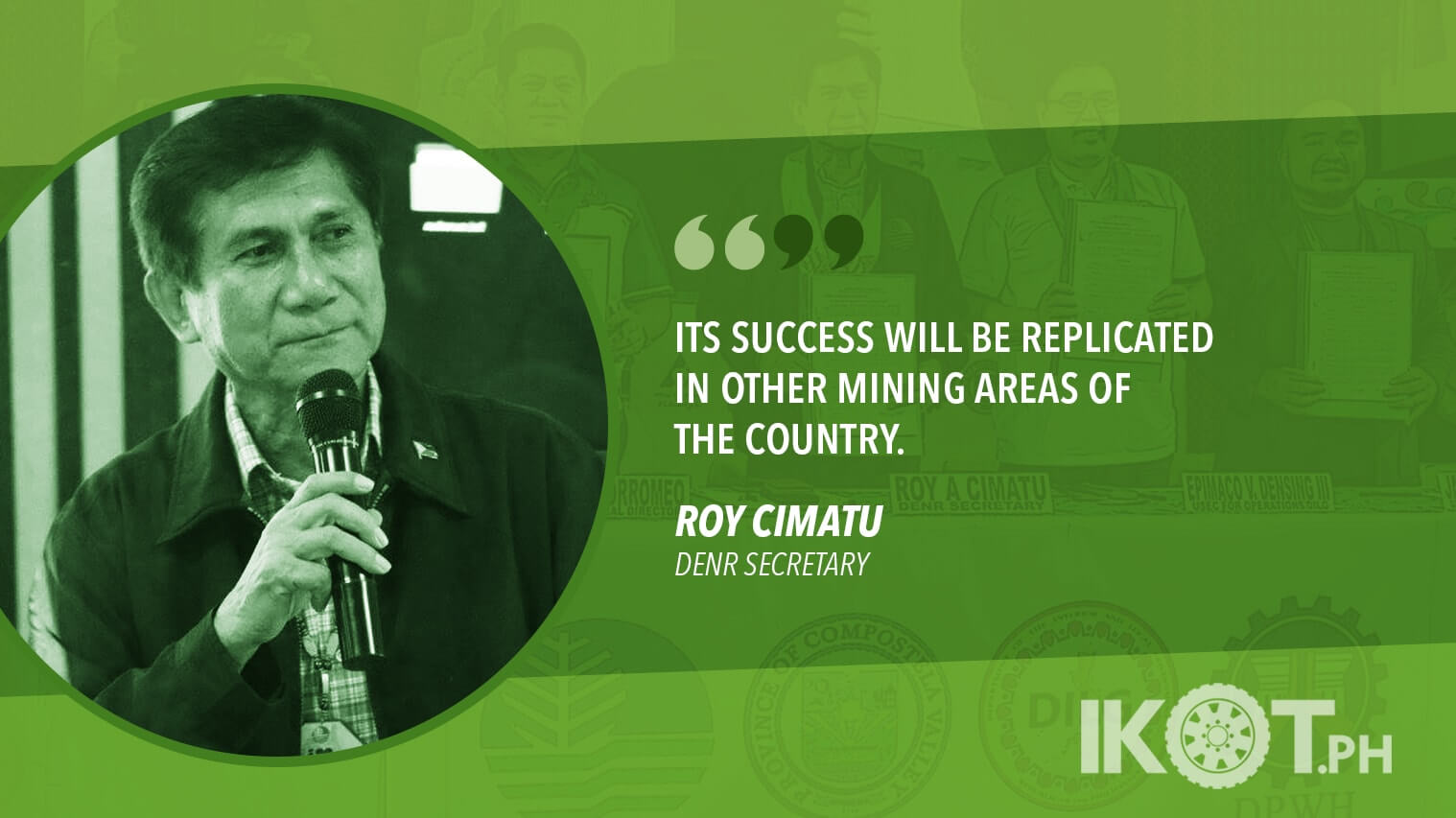Department of Environment and Natural Resources (DENR) Secretary Roy Cimatu led the signing of the Memorandum of Agreement (MOA) for the rehabilitation of the Naboc River in Monkayo town, Compostela Valley province.
A major part of the MOA is the desilting and quarrying of the 24-kilometer stretch river, Cimatu said, as he acknowledged that mining activities have contributed to the river’s silt deposits.
“Mining should not just be for profit.”
Cimatu said mining “should not just be for profit and financial gains of individual investors, but for the people and country as well.”
“We will take the challenge of improving its contribution to the economy and to also rehabilitate the areas, through concerted efforts, to protect the country’s rivers from degradation and pollution,” the environment head said.
Cimatu said the Naboc River will be DENR’s pilot area for the rehabilitation of other water bodies in the country, and its success will be replicated in other mining areas of the country.
“I am supporting the advocacy of the DENR and the President.”
Governor Jayvee Tyron Uy has vowed to commit his “time, effort, and passion” for the restoration of the river.
“I am supporting the advocacy of the DENR and the President as well,” Uy said.
On July 11, 2018, a special order 2018-593 was released for the creation of the Provincial Task Force Naboc River within the Jurisdiction of Diwalwal Mineral Reservation Area in pursuant of Republic Act 7942 or the Philippine Mining Act of 1995 as well as other environmental rules and regulations.
This was followed by a cease and desist order issued by the Provincial Task Force Naboc River on ball or rod mills and carbon-in-pulp (CIP) operators in Mt. Diwata mining area from March 16 to 18, 2019.
The Naboc River has long been a channel for effluents of mining activities in the area, as evidenced by the high levels of mercury, total suspended solids and fecal coliform, according to the DENR.
The DENR also found that the presence of mineral processing plants operating on Mt. Diwata without proper tailing ponds. Toxic discharges from these plants go directly to the Naboc River.

